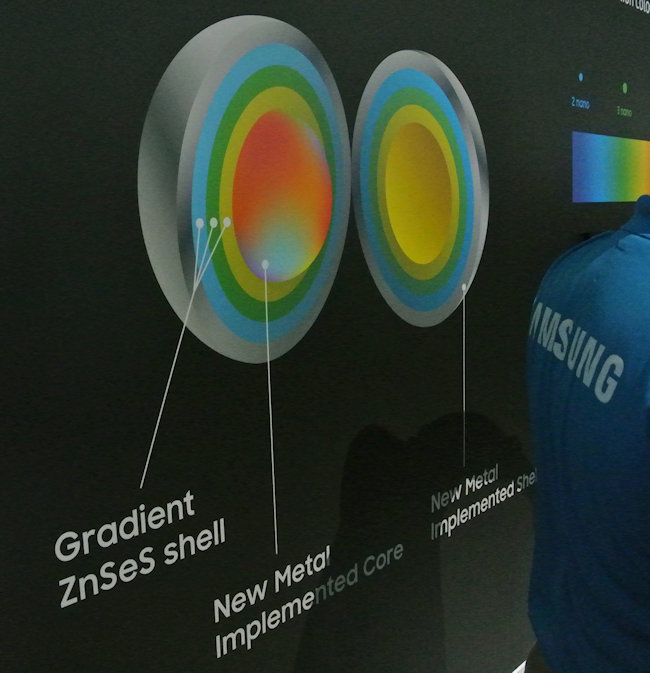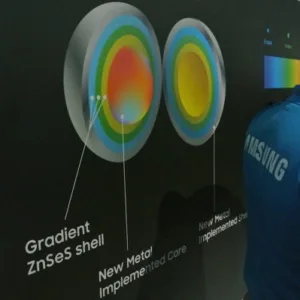At CES last week Samsung introduced its new “QLED” TV technology, but it’s not what the technical community would call QLED. We’d better get used to it, though. When Samsung’s marketing army decides to call an apple an orange, it’s going to be an orange.

Will this confuse people. You bet it will. Samsung has played this game before, when they decided to call an LCD-TV with an LED edge-light an “LED TV.” Samsung is still calling LED-backlit LCD-TVs “LED TVs,” and there are still people who believe that these are something different than LCD-TVs, which they aren’t.
Let’s be clear. The “LED-TV” misnomer may confuse salespeople and consumers, and infuriate techies, but it was a brilliant solution to a marketing problem Samsung had at the time. The dominant TV architecture was an LCD-TV lit from behind with cold-cathode fluorescent tubes (CCFLs). Samsung wanted to initiate a major marketing campaign for LCD-TVs which were lit with LEDs on one edge, with the light conducted across the rear of the LCD with a light-guide plate. This was a common architecture for laptop computers, but not yet for large-screen TVs.
 Samsung QLED TV. Image:K Werner
Samsung QLED TV. Image:K Werner
The picture quality and luminance of the LED edge-lit configuration was not necessarily better than the CCFL backlit configuration, but it produced dramatically thin TV sets, which Samsung wanted to sell as premium products. But how could Samsung distinguish between the two configurations in a simple way that would not confuse consumers? And, to complicate the situation even more, Samsung was still making plasma TVs. The solution was to toss reality overboard and name the three types of sets “plasma,” “LCD,” and “LED.” The ploy worked. Samsung dominated the “LED-TV” category for something like nine months and increased its overall market share considerably.
The Time Machine Rolls…
Let’s roll our time machine forward to 2016. Samsung is making very 4K good quantum-dot TVs under the label S-UHD. But the label isn’t very exciting to consumers and requires too much explanation. Also in 2016, Samsung acquired the assets of quantum-dot company QD Vision. QD Vision had developed significant IP around QLED technology — real QLED technology — and had the copyright for the name QLED.
True QLED refers to a structure that resembles an OLED’s structure, with the organic emitting layer of OLED replaced with quantum dots. While quantum dots (QDs) in current TVs are excited by photons, the QDs in QLED are excited by an electric field. This is a very different approach which will take years of additional development before it appears in commercial TV sets. But many people regard it as the best TV display technology under development today.
 Samsung QD Structure. Image: K Werner
Samsung QD Structure. Image: K Werner
But this is not what’s in Samsung’s “QLED” TV sets. These sets have the conventional quantum-dot structure, but the dots are said to have a novel structure. The sets showed in Samsung’s booth at CES looked very good, but whether they are better than other QD-enchanced LCD-TVs from other brands remains to be seen. It also remains to be seen whether the performance characteristics of the new QDs are significantly better than those of other QD formulations and structures. We’ll begin to get more answers soon, since some sets based on the new QD technology will be appearing this spring, according to a Samsung rep.
One more thing. Samsung’s strategy is to by-pass OLED-TV and go directly to true QLED. When they do, what will they call it?
Ken Werner is Principal of Nutmeg Consultants, specializing in the display industry, manufacturing, technology, and applications, including mobile devices and television. He consults for attorneys, investment analysts, and companies re-positioning themselves within the display industry or using displays in their products. You can reach him at [email protected].

